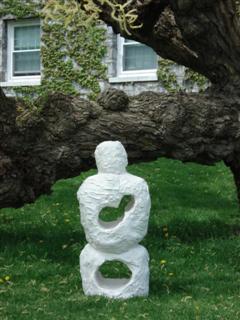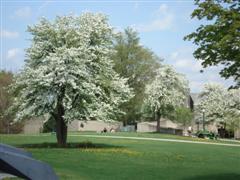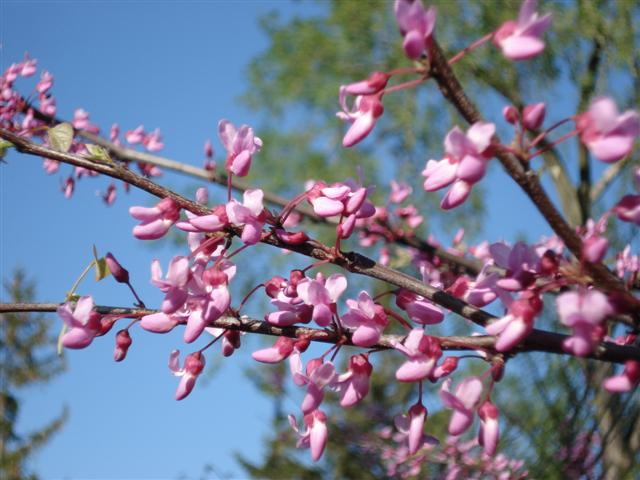I’ve always been fascinated with Easter Eggs in computers. They’re little things hidden inside computer programs, not readily accessible. For example, clicking the right combination of keys in Excel 97, I think it was, you could play a Flight Simulator game. Other easter eggs contained different credits in the about box, maybe little movies, things like that. You get the idea.
So how is this relating to landscaping? Well, surprise in the landscape is underrated. All those boring books you can read on landscape design always talk about color schemes, patterns, plant selection, some may even venture into “rhythm”, whatever that means, but they never talk about having fun. Take Lycoris, a bulb. In front of my house are clumps of the green strap-like leaves of Lycoris, commonly named “Naked Ladies”. Yes, Naked Ladies. Because you see, these leaves will grow all spring into the summer, then die down to the ground. In September, seemingly from out of nowhere, pink flowers on long stalks emerge from the ground, naked of leaves. (I’ve always said plant people like Latin names because it eliminates confusion, but this may be the real truth, apparently. Common names are embarrasing.) For the botanically inclined, they are related to Amaryllis, which do the same thing but backwards: flowers, then leaves, then dormancy.
I’ve planted at my house a surprising hemlock, “Gentsch White“. A green hemlock where the new growth is a surprising (and beautiful) white. I’ve planted one of those at Middlebury, and not telling where.
Why I’ve been thinking about this is another easter egg plant in its glory right now, a Norway spruce cultivar. Picea abies ‘Rubra Spicata’. .JPG)


 I don’t know the artist, the class, or the professor, but hats off to this piece. Next to one of our favorite trees, a massive Black Willow disintegrating before our very eyes, this piece (don’t even know the name)
I don’t know the artist, the class, or the professor, but hats off to this piece. Next to one of our favorite trees, a massive Black Willow disintegrating before our very eyes, this piece (don’t even know the name)  has captured, I think, the spirit of the surrondings perfectly. I’m no critic, and the only art classes I’ve had are in landscape design, but I know what I like. And, to whoever made this piece, well, I’ll quote my grandfather when I’d graduated high school. “You done good”.
has captured, I think, the spirit of the surrondings perfectly. I’m no critic, and the only art classes I’ve had are in landscape design, but I know what I like. And, to whoever made this piece, well, I’ll quote my grandfather when I’d graduated high school. “You done good”. I don’t know much about the land use history of the north end of campus, but I have a suspicion. The area around Bicentennial Hall and FIC, including around the parking lot, must have at some point been a pear orchard. All over the area are Pear trees, in full bloom right now. Blooming white, they are quite fragrant. Tall for a fruit tree, at about 25 feet, once the blossoms go they will be covered in glossy green leaves the rest of the summer. And yes, they produce pears. Most years. Like some fruit trees tend to, they don’t tend to fruit every year. There are always some pears out there, but I think if one were to track each tree individually, they probably don’t set fruit each year.
I don’t know much about the land use history of the north end of campus, but I have a suspicion. The area around Bicentennial Hall and FIC, including around the parking lot, must have at some point been a pear orchard. All over the area are Pear trees, in full bloom right now. Blooming white, they are quite fragrant. Tall for a fruit tree, at about 25 feet, once the blossoms go they will be covered in glossy green leaves the rest of the summer. And yes, they produce pears. Most years. Like some fruit trees tend to, they don’t tend to fruit every year. There are always some pears out there, but I think if one were to track each tree individually, they probably don’t set fruit each year.

